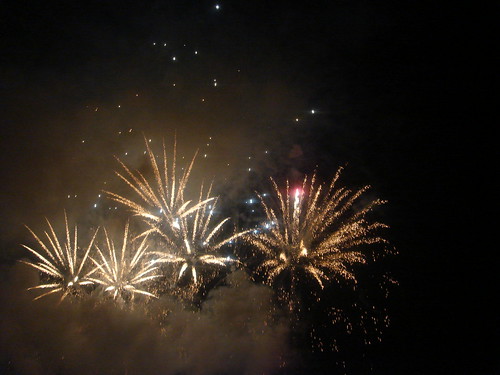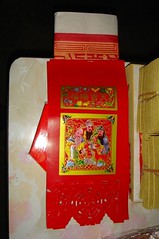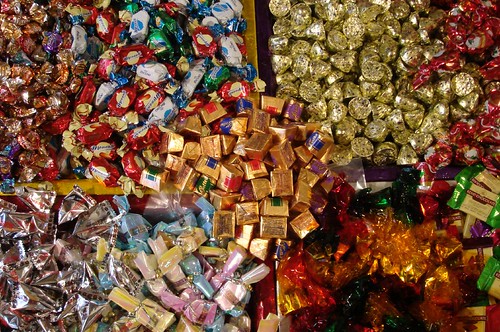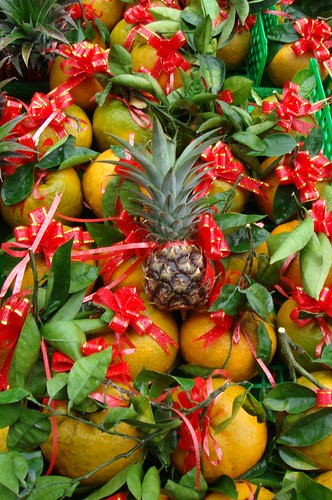chinese new year
Chinese New Year was weird for me this year.
I was looking forward to going back for the annual hot pot reunion at the Wu house. But, instead I was sadly stuck in an airport. Because of the snow in Dallas, 1 canceled flight, 1 seriously delayed flight, 2 missed international flights, and a redirect to a different city, I missed celebrating Chinese New Year’s Eve with family. I was supposed to arrive on Friday the day before CNY Eve, but arrived on Sunday, CNY Day.
I think I also kinda missed all the “excitement in the air” part of the holiday by being in Texas for the days leading up to the holiday as well. So, it just made it seem weird.
I missed all the fireworks. I missed weeks of hearing “gong xi, gong xi, gong xi ni” played over and over in store speakers. I missed . . . I just missed it. It felt like there was no celebration at all.
However, since Lawrance had the entire week off for CNY, we were able to spend the entire week just together and relaxing. We did nothing special or amazing, but it was great nonetheless.
We did go visit my best friend, Ellen and her family for a few days . . . which included seeing all her relatives, soaking in a hot spring, getting a Thai massage, making a Costco run and eating great food.
So, now the holiday and winter break are over . . . and it’s back to work and school we go . . . hi ho. hi ho.
P.S. I’ll take seeing my precious family and spending time with loved ones over feeling “not weird” anytime . . . a little weirdness is good for the soul, right?
fireworks and chinese new year
"[The Taiwanese] people take their fireworks extremely serious," as another Amanda living in Taiwan said a few weeks ago. And she is very right!

There are fireworks that swirl, fireworks that explode into sparkling red hearts, and fireworks that burst into two or three colored smiley faces. It's amazing what fireworks can do!
The first time I celebrated Chinese New Year in Taiwan, I could NOT believe the amount of fireworks and firecrackers that were used during the celebration of the New Year. It begins on or even before New Year's Eve. ALL NIGHT LONG firecrackers and fireworks explode seemingly EVERYWHERE.
That first night, something cracks, whizzes, or pops at least every ten minutes. And, sometimes the cracks, pops, and whizzes last for ten consecutive minutes.

And, we are not talking only formal displays from cities, schools, and companies. We are talking normal people shooting off fireworks (in the little allies between high rises). And, they don't just go off at night, sometimes firecrackers and even fireworks are lit during the day. This year when we were at the day market on New Year's Day, someone lit fireworks over the market area at 10 in the morning. We were sprinkled with ashes. It's crazy, I tell you! Crazy!!
About two or three days after the New Year the use of fireworks and firecrackers slows down a little until the Lantern Festival, which this year is on the 21st. (As I write this, on Thursday evening, I've already seen eight different firework shows from my study window in less than an hour!)
Below are two videos taken at my friend's school on Chinese New Year's Eve. They are each about one minute from about 10-15 minutes of a fireworks show at her school. So, just multiply each video by about 7, and you more or less can get the full effect.
According to my Chinese teacher and a video we watched in Chinese class (11 years ago! oh my!!), firecrackers are a part of Chinese New Year because of a legend about a dragon named "Nian" (which is the same as the Chinese word for "year"). This man-eating dragon descended from the mountains every year in the winter to devour humans before going back into the mountains to hibernate. One year the townspeople, of a village that was often preyed upon decided to take action and fight against Nian. They exploded bamboo that had been filled with gun powder in order to try to scare Nian away. And, it worked! So, they were able to "guo nian" (過年) or "pass over Nian," and as long as they did this each year, he didn't bother their village.
Again, it sounds like this legend could have roots in the Old Testament, right? Could Nian be the Chinese version of the angel of death from the tenth plague? I don't know, maybe.
But, I do know that the longer I live in Taiwan, the more convinced I become that  there will be regular displays of amazing firework shows in heaven as we celebrate the Risen Savior!
there will be regular displays of amazing firework shows in heaven as we celebrate the Risen Savior!
It's gonna be awesome yall!! :)
red envelopes
Perhaps the part of Chinese New Year that is most look forward to by children is the part where they get "red envelopes" (紅包). Inside the "red envelopes" is MONEY!!
Just like gifts under the tree at Christmas time make American children giddy with excitement and expectation, the thought of getting a red envelope does the same to Taiwanese children.
If you do not yet have a full-time job, you can expect to get red envelopes from your parents, aunts and uncles, as well as from your grandparents. So, all children and many young adults (those still in college) get red envelopes. Also, if you have children who are old enough to have jobs, you can expect to receive a red envelope too. So, grandparents usually give and receive red envelopes, but the middle aged "sandwich" generation--those with both children and elderly parents--find themselves only giving away envelopes.
(I know that online some sites say all unmarried people receive red
envelopes despite age, but in practice here in Taiwan, this is not
true. It seems that only non-workers--the young and the very
old--receive red envelopes. If you work, you are expected to give.)
I've asked several of my students how much money they can expect to get in total from all of their red envelopes. I've been told amounts as low as 6,000 NT (about 190 USD) to amounts as high as 30,000 NT (about 940 USD). I think the average falls around 8,000 to 10,000 NT (250-315 USD).
I also asked how much they could expect to find in one envelope. And the typical answers I get include amounts between 800 NT (25 USD) to 2000 NT (62 USD).
How much you receive in all depends on how big your family is, how many
relatives you see during the New Year holiday, and how generous your
extend family is (which seems to be dependent on how well business went
the previous year).
I don't know how much grandparents typically receive from their working children and grandchildren.
Red envelopes are often passed out after that big New Year's Eve
dinner, but this is not necessarily the only time to gift some one with
money wrapped in red. When an aunt or uncle comes over they pull out the red envelopes and the little ones line up to say good words to the aunt or uncle and in return they get a red envelope. Or, when you go over to grandma's and grandpa's at some point they will pull out red envelopes to give to the grandchildren.
In fact, just like we have the "trick or treat, smell my feet, give me something good to eat" line for Halloween, there is something similar in Chinese for red envelopes that goes like this "Congratulations and good fortune; now bring out the red envelope!" (Of course in Chinese it rhymes and sounds much better.)
Like most papers in Taiwan, red envelopes should be both given and received with two hands.
And, not to be left out of the festivities, many times, pets also get red envelopes too! Gilby got one his first Chinese New Year. Inside his "hong bao" (red envelope) was a 50 NT coin (worth about 1.50 USD). The person who gave it to Gilby told me wrap the envelope around his collar (kinda like the cat above).
One more fact about red envelopes . . . . they are not always just plain red. Often times there are blessings on them or sometimes even cartoon characters on them--again in either black or gold ink.
Oh, yes, and red envelopes are also used to gift money at weddings and on other occasions too. So, unlike Christmas wrapping paper, red envelopes are used year round (of course if they say "happy new year" that wouldn't be true).
Photos come from flickrites who've given permission to blog their photos: 1, 2, 3, 4, 5, 6, 7.
blessings on door frames
 I know Chinese New Year was two weeks ago, but I've been on vacation since then and am just now getting around to blogging about it. In past years, I just haven't blogged about Chinese New Year since I couldn't blog in "real time." But this year, I set a few short autoposts before I took off on vacation (worship, candy, blessing fruits), and for the rest of this week I want to share a little more about some of the customs and traditions that surround this all important holiday.
I know Chinese New Year was two weeks ago, but I've been on vacation since then and am just now getting around to blogging about it. In past years, I just haven't blogged about Chinese New Year since I couldn't blog in "real time." But this year, I set a few short autoposts before I took off on vacation (worship, candy, blessing fruits), and for the rest of this week I want to share a little more about some of the customs and traditions that surround this all important holiday.
So, let's talk today about red papers. In the first two photos below, you can see one of my bestest friends in the whole wide world and her father pasting red papers around the door to their home and place of business.
Each year new "spring couplets" (春聯) are posted around the door frames of homes. They are left up all year--or until they come down on their own accord. Some get quite weathered and/or faded as the year passes, but they are left till the following year, when they will be replaced by new papers.
 These spring couplets can either be purchased factory made, handmade, made to order (while you watch the guy paint/write), or you can make your own. The characters on the papers are written in either black or gold ink--but the paper is always, always red.
These spring couplets can either be purchased factory made, handmade, made to order (while you watch the guy paint/write), or you can make your own. The characters on the papers are written in either black or gold ink--but the paper is always, always red.
My friend's grandfather made the single four word "blessing" (not "couplet") that hung on my door when I lived in Kaohsiung. The video below shows a man writing the words for blessing that was hung on my Taiwanese father's home.
These "spring couplets" aren't simply lines from poems. They are often "lucky words" or words that tell people how to treat others (kinda like the Chinese version of the "golden rule"). If Christian families in Taiwan want to paste "spring couplets" they will choose verses from Scripture or phrases that proclaim how great God is.
 I'm not sure why, but calling them "spring couplets" doesn't quite capture it all. There is also usually a third paper that is pasted on the top of the door and is written horizontally.
I'm not sure why, but calling them "spring couplets" doesn't quite capture it all. There is also usually a third paper that is pasted on the top of the door and is written horizontally.
In addition to the "couplets," the words "blessing" and "spring" are written on squares of red paper that are at an angle so they look like diamonds.
And, not always, but commonly, these two words are hung upside down (like the gold character in the photo where the man is looking at couplets that are for sale).
Why are they upside down? Glad you asked. In Chinese when you say "your blessing is upside down" it sounds like you are saying "your blessing has arrived." It's a homophone thing.
(One couple has posted many kinds of factory made "spring couplets" into a flickr set. Worth a quick look if you want to see some of the things that were for sale this past Chinese New Year here in Taiwan.)
Another red thing that gets pasted on both doors and windows throughout Taiwan at this time of year are papers depicting gods. Perhaps he is (they are) the door god(s), but I don't know. On the main door of the home, usually five papers get pasted. Additional "god papers" are then pasted on to every window and every additional door--both inside and outside.
According to my Taiwanese friends, the Taiwanese believe that by hanging these papers over the doors and windows of their home they are protecting their home from evil spirits. The papers are part of the baibai table on New Year's Eve, and are pasted up after that.
Is it possible that pasting red papers on door frames once a year has ancient roots in the blood of the lamb and passover?? I don't know, maybe.
I do know, however, that God loves the Taiwanese and wants to bless them like they never been blessed before.
happy chinese new year!!!
Happy Year of the Rat!!
This photo above was taken at the day market on the morning of Chinese New Year's Eve a few years ago. During the Chinese New Year time, every store sets out candy and every home has a tray of candy set out for guests.
Perhaps it is to wish friends and neighbors a sweet year--that's just a random guess on my part. :)
(I'll try to share some more Chinese New Year traditions with you next week.)
Here are some more photos of Chinese New Year candy for sale. Some are in the shape of firecrackers, some in the shape of an ancient weight for currency, and some look like Chinese lanterns.
blessing fruits (updated)
At Chinese New Year, everything is a little more festive--including the fruits that have "blessing" values assigned to them.
I forget which blessings pineapples and oranges are supposed to bring. Perhaps wealth--anyone know for sure?
UPDATE: In the comments, Lawrance, answers my question. I put his reply here to make the answer more accessible to others. Thanks for clearing up my vauge impression, Lawrance.










